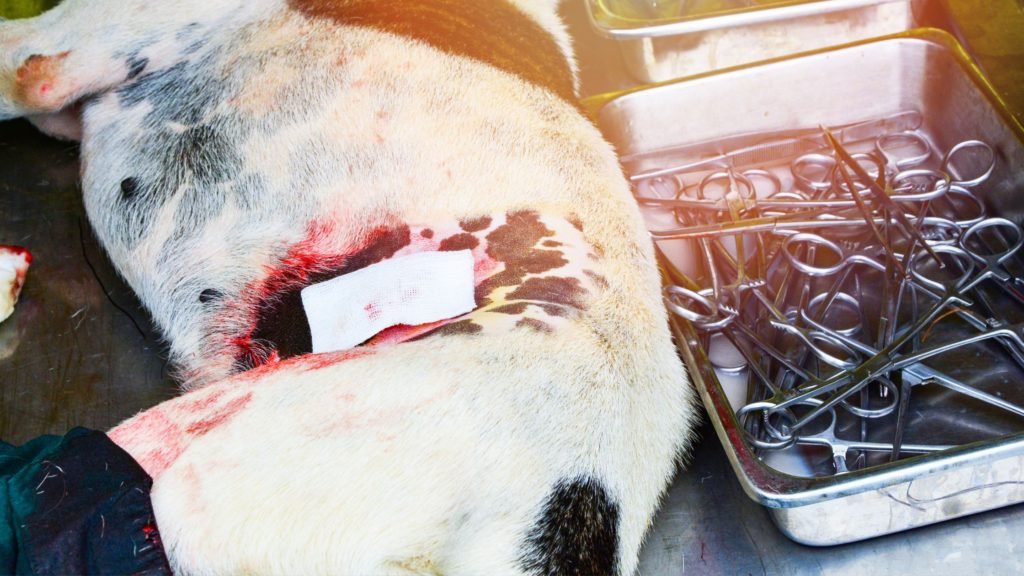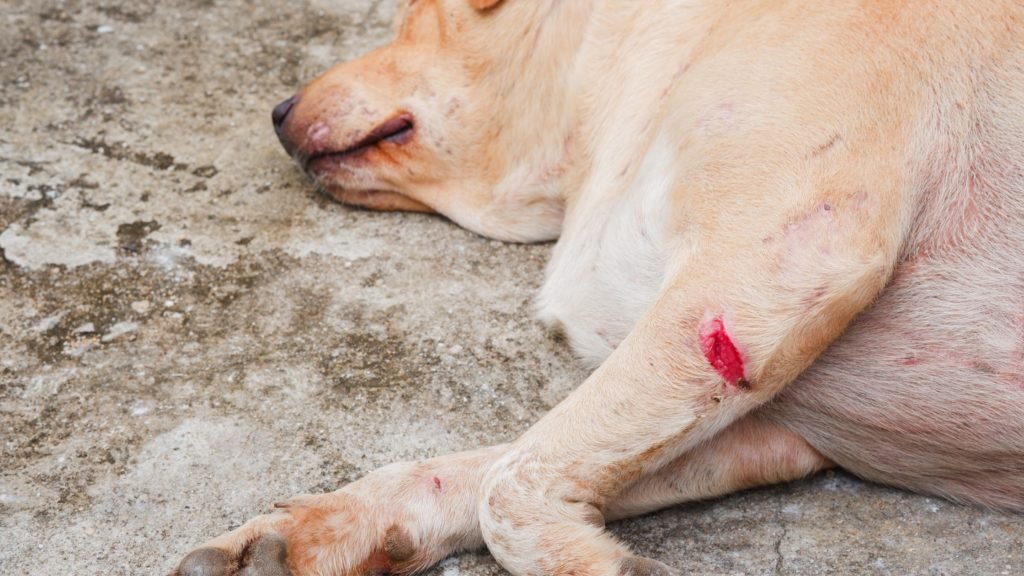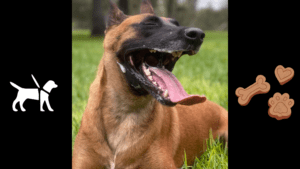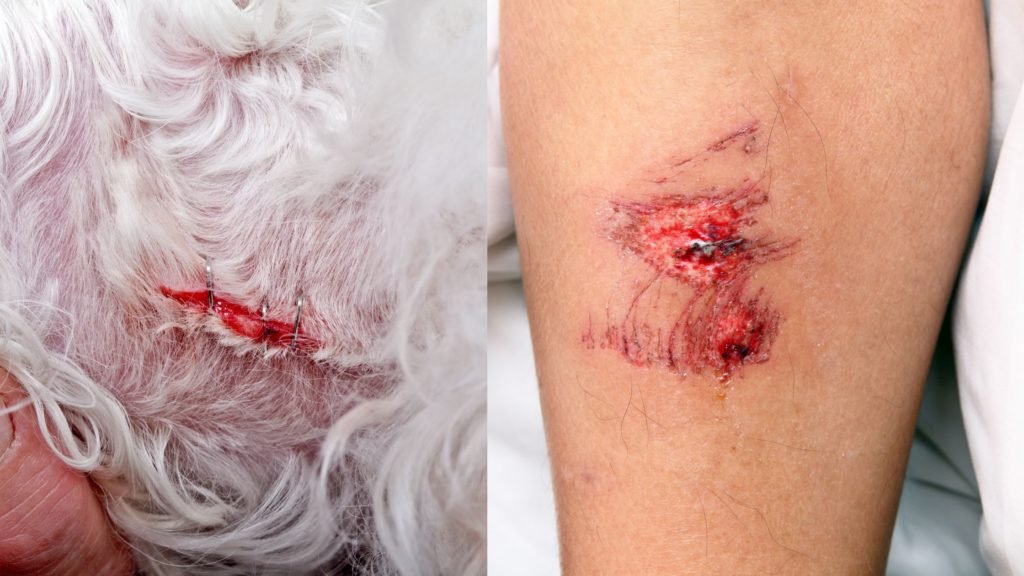Regarding the question, “Do dogs heal faster than humans?” you might be surprised at the complexity behind the answer. Dogs descended from wolves have evolved to survive in challenging environments, often healing from injuries with a speed that can seem astounding.
The Mechanics of Canine Healing
Dogs’ bodies possess an intricate network of healing processes. These include inflammation response, proliferation of cells around an injury, and remodeling – the strengthening and ‘fine-tuning’ of the repaired tissue.
Canine Regeneration: Fact or Fiction?
Some animals possess amazing regenerative abilities. While dogs don’t regrow limbs like starfish or regenerate their hearts like zebrafish, they have impressive healing capabilities. Their skin can heal quickly, thanks to its rich blood supply and cell activity.
The Science Behind Canine Skin Healing
Canines possess an extraordinary capacity to expedite the healing process of their skin. This is a consequence of their highly efficient cell production and migration to the area of injury, leading to swift closure of wounds.
Do Dogs Heal Faster Than Humans?
When evaluating the recovery rates of canines and humans, it is crucial to conduct a thorough comparison and analysis to ascertain whether or not dogs have a superior healing ability.
The Speed Factor: How Fast Do Dogs Heal?
Generally, dogs tend to heal faster than humans, particularly when it comes to skin wounds. However, this doesn’t mean dogs are invincible or don’t feel pain. They experience discomfort like humans, and proper care is essential for their recovery.
The Human Healing Mechanism
The human healing process is quite sophisticated. Our bodies, with complex immune systems, have an incredibly effective way of dealing with injuries. But compared to dogs, our healing speed can be slower due to differences in metabolic rates, skin elasticity, and cellular activity.

Factors Affecting Dog Healing
Like humans, dogs’ healing rate can be influenced by many factors. These factors include the dog’s age, general state of health, dietary habits, and the type of wound or injury they have sustained.
Aging and Healing
It is worth noting that senior dogs may need a longer duration to recover from injuries or illnesses than their younger counterparts. This is because older dogs tend to have a slower metabolic rate and cell regeneration process.
Role of Nutrition
Feeding your dog a diet high in proteins, vitamins, and minerals can speed up their healing process and help them recover more quickly.
The Role of Veterinary Care in Dog Healing
Veterinary care plays a crucial role in dog healing. Timely medical intervention, proper wound care, and following the vet’s advice can drastically improve a dog’s recovery speed.
How Vets Aid in Healing
In the unfortunate event that your furry companion sustains an injury, you can rest assured that veterinarians possess the necessary expertise to provide top-notch care. Their services may include cleaning the wound thoroughly, applying suitable dressings, and prescribing medications that facilitate the healing process.
Importance of Follow-up Care
Follow-up appointments allow vets to monitor the healing process, make necessary adjustments to treatment plans, and ensure the best possible recovery outcome for the dog.
The Mystery of Canine Cell Regeneration
Cell regeneration is a vital part of the healing process. Dogs have a higher cell regeneration rate than humans, giving them a healing edge.
A Closer Look at Canine Cell Regeneration
When a dog sustains an injury, the surrounding cells initiate a response to the damaged tissue by multiplying and replacing the affected area. This is a natural process that helps the dog’s body to heal and recover from the injury.
The Wonder of Canine Cell Regeneration
When a dog gets injured, cells around the injury site multiply and replace the damaged ones. This rapid cell proliferation and faster cell migration to the wound site expedite wound closure and healing.
Comparative Study of Dog and Human Healing
In order to ascertain whether dogs exhibit a speedier healing process than humans, it is imperative that we undertake a comprehensive comparison between the two species’ respective healing mechanisms.
Biological Differences in Healing
Key biological differences exist between dogs and humans. Dogs have a faster metabolism, contributing to quicker cell regeneration and wound healing. Though they heal more slowly, humans often have more effective long-term recovery due to advanced medical interventions.
Understanding Canine Healing
Grasping how dogs heal involves understanding their body’s self-healing mechanisms. Their immune system responds quickly to injury, and their skin regenerates cells at an impressive rate, sealing wounds more rapidly than human skin.
Insights into Human Healing
Human healing is more complex and slower in comparison, largely due to our less elastic skin and slower metabolic rate. However, humans often have access to more advanced medical interventions, aiding recovery from severe injuries or illnesses.

Caring for Your Injured Dog
Caring for Your Injured Dog
Helping your dog heal is a priority for any pet parent. Knowing how to care for wounds, when to visit the vet, and how to provide a conducive healing environment can significantly speed up recovery.
Immediate Care for Dog Wounds
When your dog gets injured, it’s important to clean the wound gently with warm water and mild antiseptic; avoid using human products unless approved by a vet. In case of severe injuries, seek immediate veterinary attention.
Creating a Conducive Environment
Ensuring your dog is comfortable, stress-free, and well-fed aids their healing. Provide a cozy bed, give them their favorite toys, and feed them a balanced diet that supports recovery.
The Mechanism of Wound Healing in Dogs
The Mechanism of Wound Healing in Dogs
Similar to the way wounds heal in humans, the healing process for dogs’ wounds also occurs in three distinct stages. These stages are namely inflammation, proliferation, and maturation. It is worth noting that these stages are not always sequential but tend to overlap with each other.
Inflammation Stage
This initial phase begins immediately after the injury. Blood vessels at the wound site constrict to minimize bleeding. Within minutes to hours, these vessels dilate, leading to swelling and redness, which are signs of inflammation. While sometimes uncomfortable for your dog, this inflammation protects the wound and kills bacteria.
Proliferation Stage
This phase typically begins a few days after the injury. Fibroblasts (connective tissue cells) proliferate and produce collagen, which helps build new tissue and close the wound. New blood vessels also form, supplying nutrients to the healing tissue.
Maturation Stage
The last stage of healing can last weeks to months, depending on the severity of the wound. During this phase, the new tissue strengthens and gains flexibility. While the healed area may look different from the surrounding skin, it should be free of pain and fully functional.
Understanding these stages can help dog owners manage expectations regarding their pet’s healing process.
Why Some Dogs Heal Faster Than Others
The recovery of dogs can be influenced by a multitude of different factors.
Age of the Dog
Canine recovery rates vary depending on age. Younger dogs typically bounce back quickly after an injury due to their higher metabolic rate and overall vigor. Conversely, senior dogs may require additional healing time and medical intervention to achieve a full recovery.
Overall Health and Immunity
Healthy dogs with a robust immune system are more likely to recover quickly. Dogs with underlying health conditions may experience slower healing.
Nutrition
Proper nutrition plays a crucial role in wound healing. Diets rich in protein, vitamins, and minerals aid cell regeneration and tissue repair.
Care and Management of Wound
Appropriate wound care, including cleaning and dressing the wound, can promote faster healing. Neglected injuries are more likely to become infected, significantly delaying recovery.
Genetics
Some dog breeds may inherently heal faster than others, although more research is needed to confirm this.
Conclusion
While it’s true that dogs often heal more quickly than humans, especially in the case of minor injuries, their healing process is no less complex or amazing. Every pet parent should understand these processes, ready to assist when their furry friend is injured. Remember, timely vet care is critical, and your love and attention can make a world of difference to a healing pup.
FAQ
How fast do dogs heal?
The healing pace of a dog’s wounds is contingent upon various factors, such as the nature of the injury, the age of the dog, and its overall health condition. However, it’s typically observed that minor wounds tend to commence the healing process within a few days.
Why do dogs heal faster than humans?
Unlike other members of the animal kingdom, dogs exhibit a superior metabolic rate and remarkably more pliable skin. This unique combination of traits enables these four-legged creatures to recover from injuries with greater haste while also facilitating the regeneration of cells within their bodies.
How can I help my dog heal faster?
To aid in the recovery of your beloved furry friend, you must administer proper wound care, provide them with a well-balanced and nutritious diet, ensure they receive ample rest, and promptly seek the assistance of a veterinarian when necessary.
Do dogs need vet care for all injuries?
While minor scratches and abrasions might heal with home care, a vet should promptly address deep wounds, fractures, or signs of illness.
Related Articles

Navigate the Adventure of Owning A Portuguese Water Dog
A maritime spirit is waiting to leap

Pharaoh Hound Egyptian Dogs: An In-depth Look
If you’ve ever felt intrigued by the

Uncover your dog breed based on your zodiac sign
Were you looking for the perfect dog

Master the Art of Force Free Dog Training: A Full Guide
Discover the benefits of force-free dog training

The Best Dog Breeds for Families: A Guide to Choosing the Perfect Companion
The best dog breeds for families: When

Discover the unique world of wolf dogs breeds: Top 9 Breeds
Wolf dogs breeds, also known as wolf

